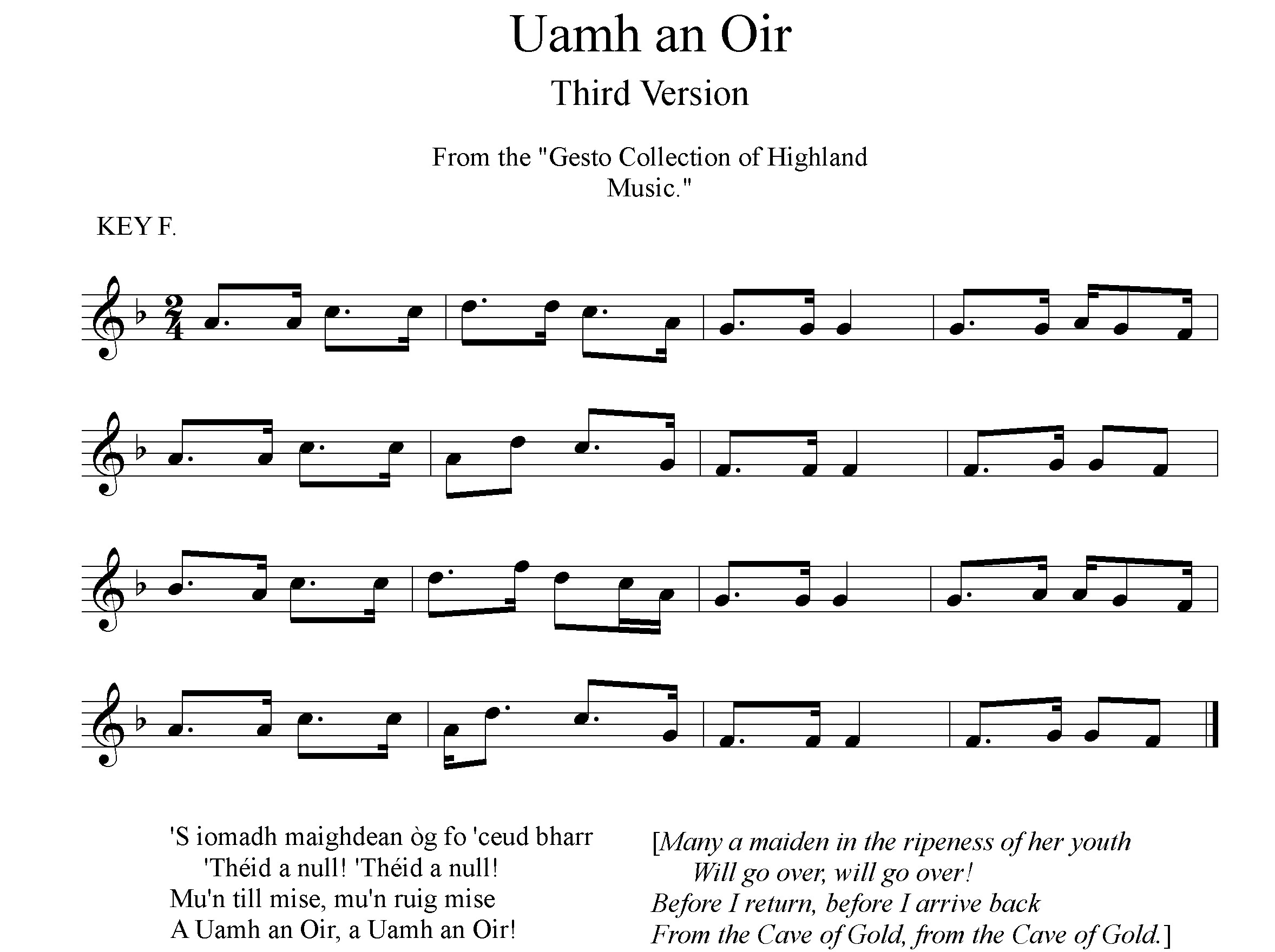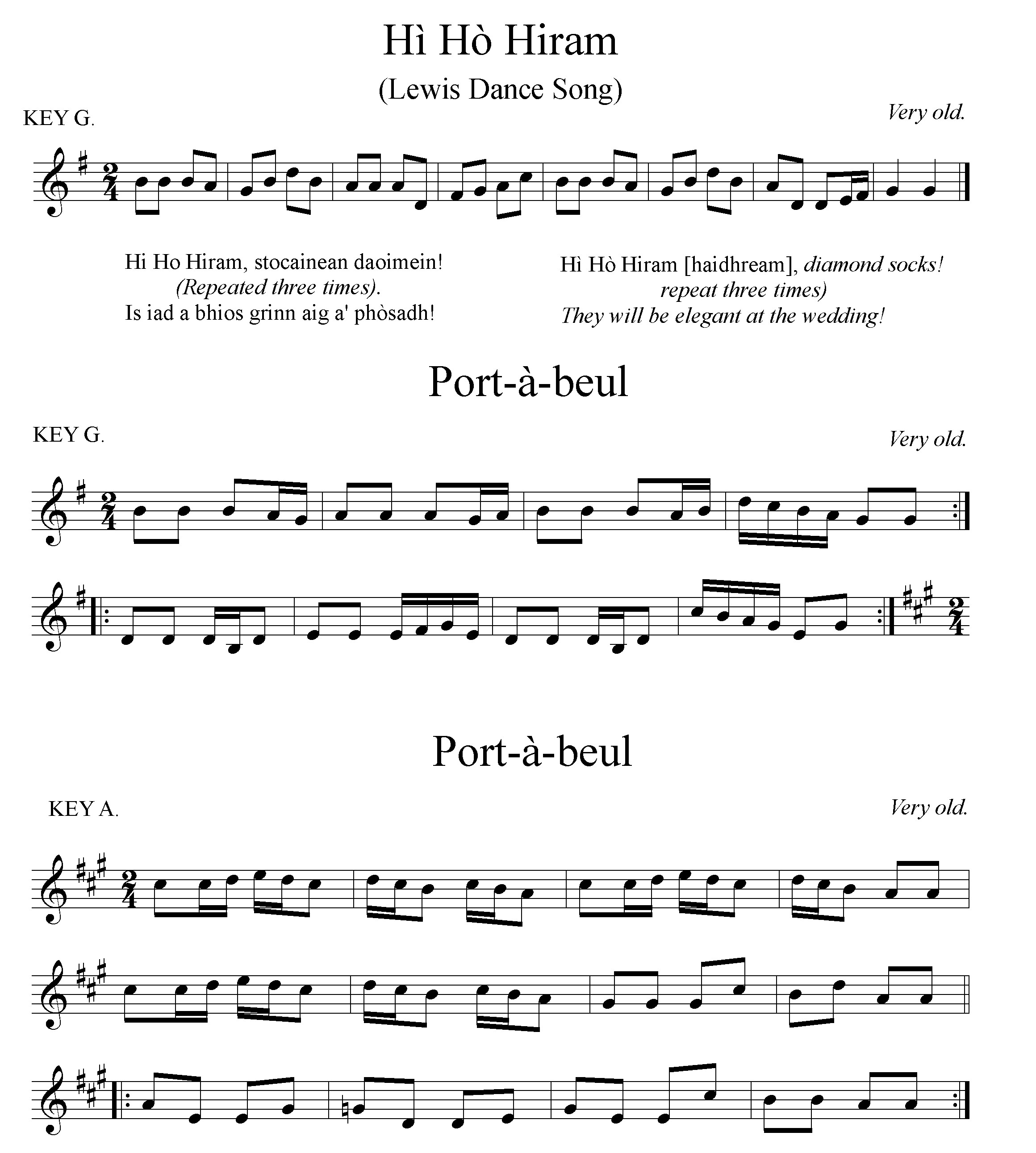The Oban Times, 16 March, 1901
Puirt-A-Beul
“Mouth-tunes,” or “Songs for Dancing.”
By Dr. Keith N. MacDonald


Besides the ordinary reel and strathspey music, the old Highlanders had several ancient character dances in the form of comic or dramatic dances. About a dozen are still known in some places, though not always danced at the present day, and several others have no doubt become extinct. The writer has seen “Dannsadh na Gòraig,” danced many years ago. It was danced by a woman who held the skirt of her gown with both hands, the arms being stretched above the head, so as to hide the face and the head, and the dance consisted of a circular jig around the room which might or might not be accompanied by the “port-a-beul,” ending with a sudden rush out of the room. Long before the days of country dances and waltzes, etc, the Highlanders had an extensive programme of dances, as will be seen from the following list, sufficiently copious for any public function:–
1. The ordinary reel and strathspey.
2. Dannsadh Claidheimh, or sword dance.
3. Dannsadh na Biodaig, or dirk dance.
4. Seann Triubhas, or trews dance.
5. Cailleach an Dùrdain, dramatic character dance.
6. An Dubh-Luidneach, comic dance.
7. Dannsadh na Gòraig, the foolish woman’s dance.
8. Dannsadh nam boe, the dance of the bucks.
9. Figh an Gun, weave the gown.*
10. Croit an Droigheann, the thorny croft.
11. Dannsadh na tunnaig, the duck’s dance.
12. Dannsadh bhriosgaidh, something like the duck’s dance.
13. Cath nan coileach, the cock fighting.
14. Ruidhleadh nan coileach-dubha, the blackcock dance.
All these would have been danced to the “puirt-a-beul,” The tune of Gille Calum dates back as far as the middle of the 11th century and is supposed to have been composed to Malcolm Ceannmore’s tax-gatherer. It was during the reign of the big-headed monarch that the “bodle,” or two pennies Scots, equal in value to a third of our halfpenny, was added to the coinage, and was called in Gaelic “bonn-a-sia,” or coin of six, being the 6th part of a shilling Scots, which seemed contemptible in the eyes of the Highlanders. It is also probable that the tune “Gille Calum dà pheighinn” (Gille Calum Two Pennies) may have been composed in irony to the tax collector or the King himself, for having removed the court from Dunstaffnage Castle to Dunfermline. The writer has never seen the dirk-dance, but he believes it was distinct from the sword dance. The “Seann-triubhas” is well known. “Cailleach an Dùrdain” was a dramatic character dance in which a man and woman took part. During the performance the woman falls and pretends that she has been killed by the man, but he brings her to life again, by breathing upon her and touching her.† “An Dubh-Luidneach” is described in the “Celtic Monthly” as a grotesque dance, performed by one person. “Dannsadh nam boe,” the bucks’ dance, was performed by three men, who “reeled fantastically about like goats.” “Dannsadh na tunnaig,” and “Ruidhleadh nan coileach-dubha,” and “Cath nan coileach” resembled the gyrations of these birds. “Croit an Droigheann” has probably died out. We have met with no one who has seen it danced.
________________________________________________
* We have heard this one named “Faigh an gunna–get the gun.
† See Alexander Carmichael’s “Carmina Gadelica,” 1900; the “Celtic Monthly” for February, 1901; and Alex. Campbell’s “Grampians Desolate.”